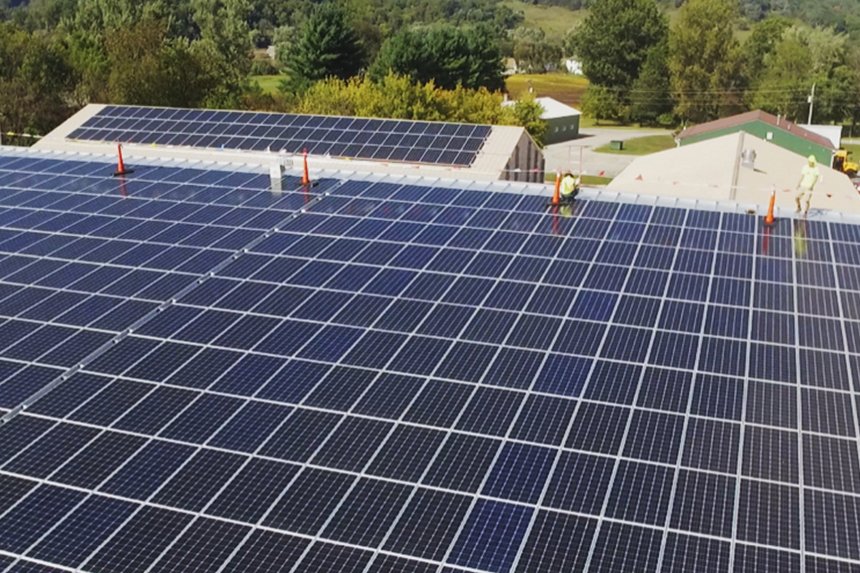How Does Solar Energy Work?
Learn how we utilize 100% renewable energy to sustainably produce delicious MacroBars.

We all understand the basic concept of solar power—turning sunlight into electricity using solar panels—but most of us have never stopped to consider how that process actually works.
The earth gets more energy from the sun in a single hour than the world’s population uses in an entire year, which makes it an incredibly abundant renewable resource. Even better, solar energy generates zero emissions while producing power, and the equipment used to harness that sunlight is so durable that solar panels can generate power for 25-30 years before needing repairs or upgrades.
As part of our commitment to sustainability, we’ve installed 844 solar panels to generate the majority of the power needed for our production facility in Viola, WI. But what’s actually going on inside those 844 panels? Here’s a mini chemistry lesson:
1. Solar panels are made up of photovoltaic cells. These cells are filled with two distinct layers of silicon—the second most abundant element on earth—sandwiched together. You can picture the atoms of silicon like a grid, where atoms are connected to each other with four strong bonds that keep electrons in place under normal conditions.
2. The two different layers of silicon in the solar cell are called N-type and P-type, respectively. N-type Silicon has extra electrons, while P-type has extra spaces for electrons. The place where these two layers meet is creatively called the P/N junction.
3. When an energy particle from the sun (called a photon) hits the silicon cell with enough force, it knocks an electron out of its bond, which leaves behind a hole. This means the negatively charged electron and location of the positively charged hole left behind are free to move around.
4. But the electrons can’t just move wherever they want. The P/N junction creates an electric field that only allows the electron and the positively charged hole to move one way. The electron heads to the N side, while the hole is drawn to the P side.
5. Now picture this reaction happening to thousands of electrons all at once. As those mobile electrons are drawn up to the N side of the cell, they’re collected by metal fingers at the top of the solar cell, and they can then flow through an inverter and into electrical circuits to power electronics.
6. When electrons finish the circuit, they flow back into the solar cell and refill another hole in the silicon. This means the only movement required for the system to function is the movement of the electrons around the circuit.
7. Each of these solar cells only creates about half a volt of electricity, but you can string many solar cells together to create enough power for almost anything. The most efficient solar panels are still only about 46% efficient because much of the sunlight is reflected off the panel, and sometimes those charged electrons fall back into their hole before completing the circuit. However, technology continues to improve, which will make solar power even more accessible and efficient in the coming years.



